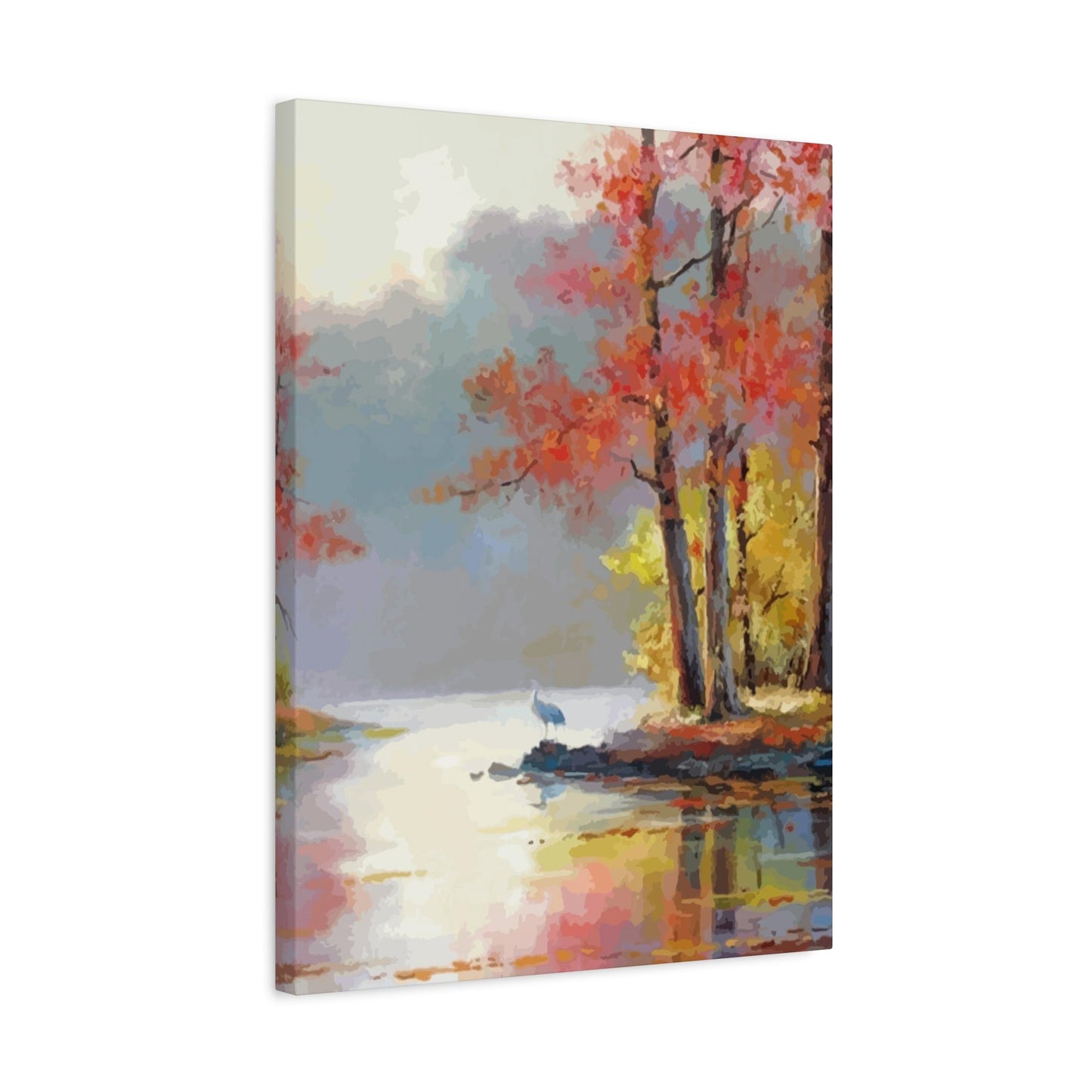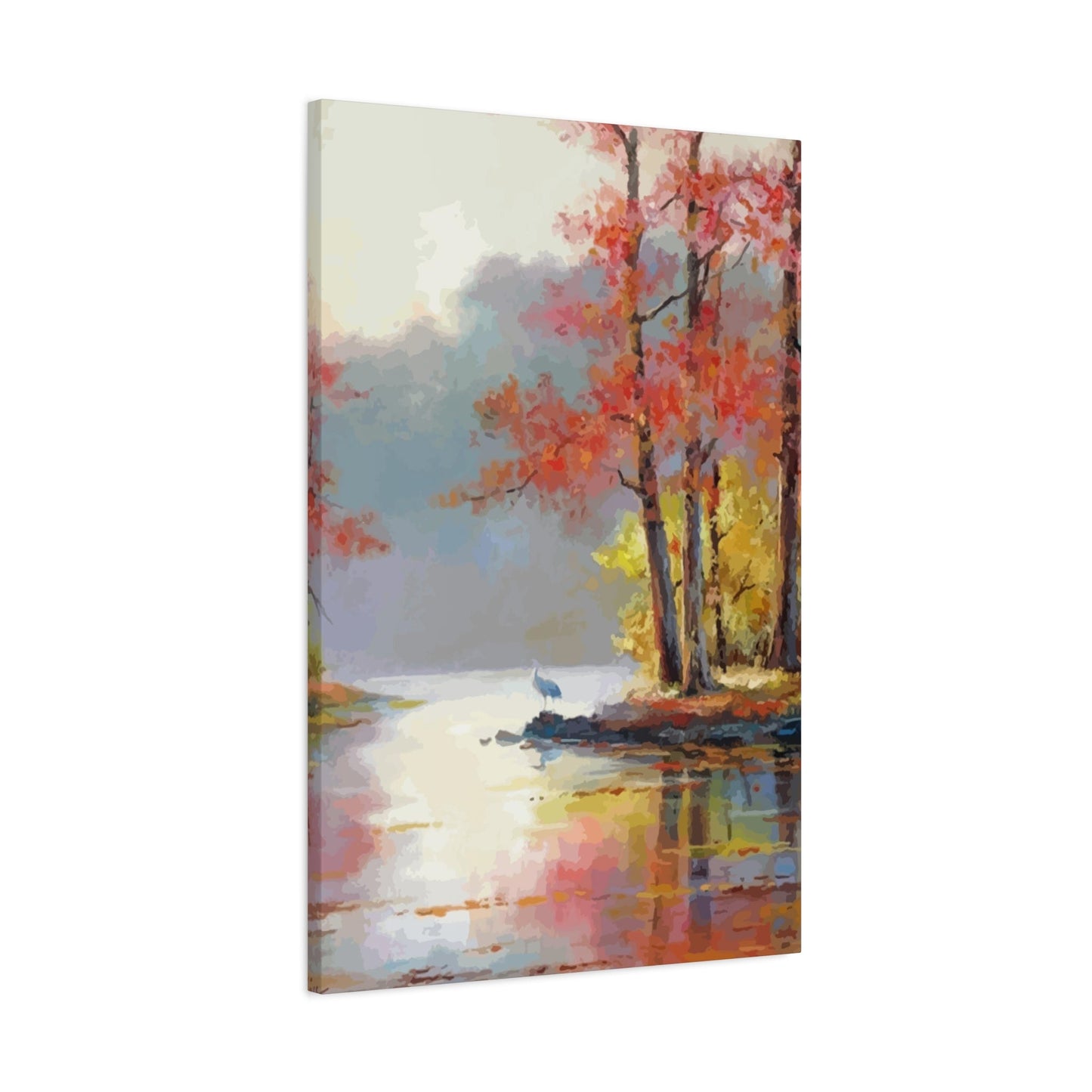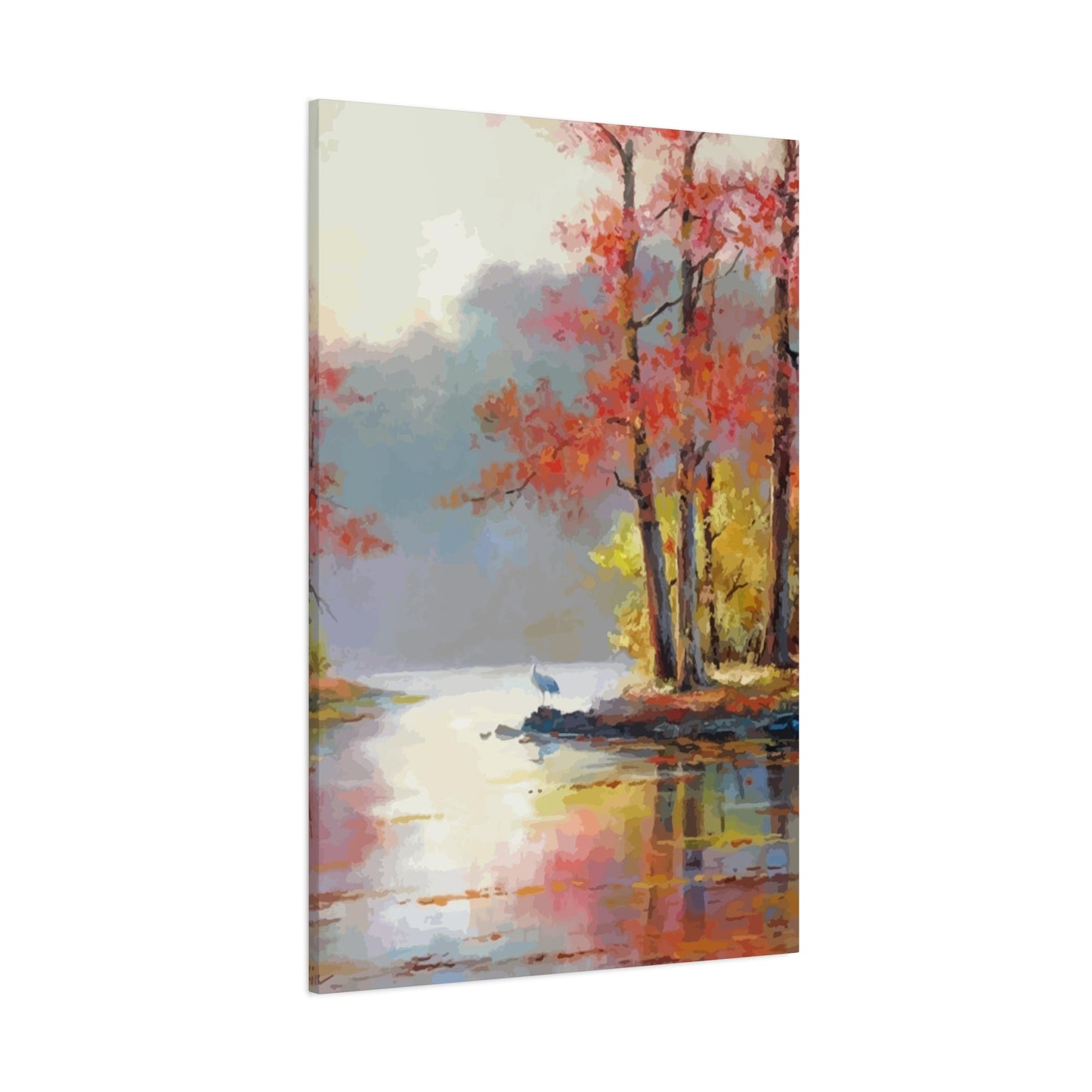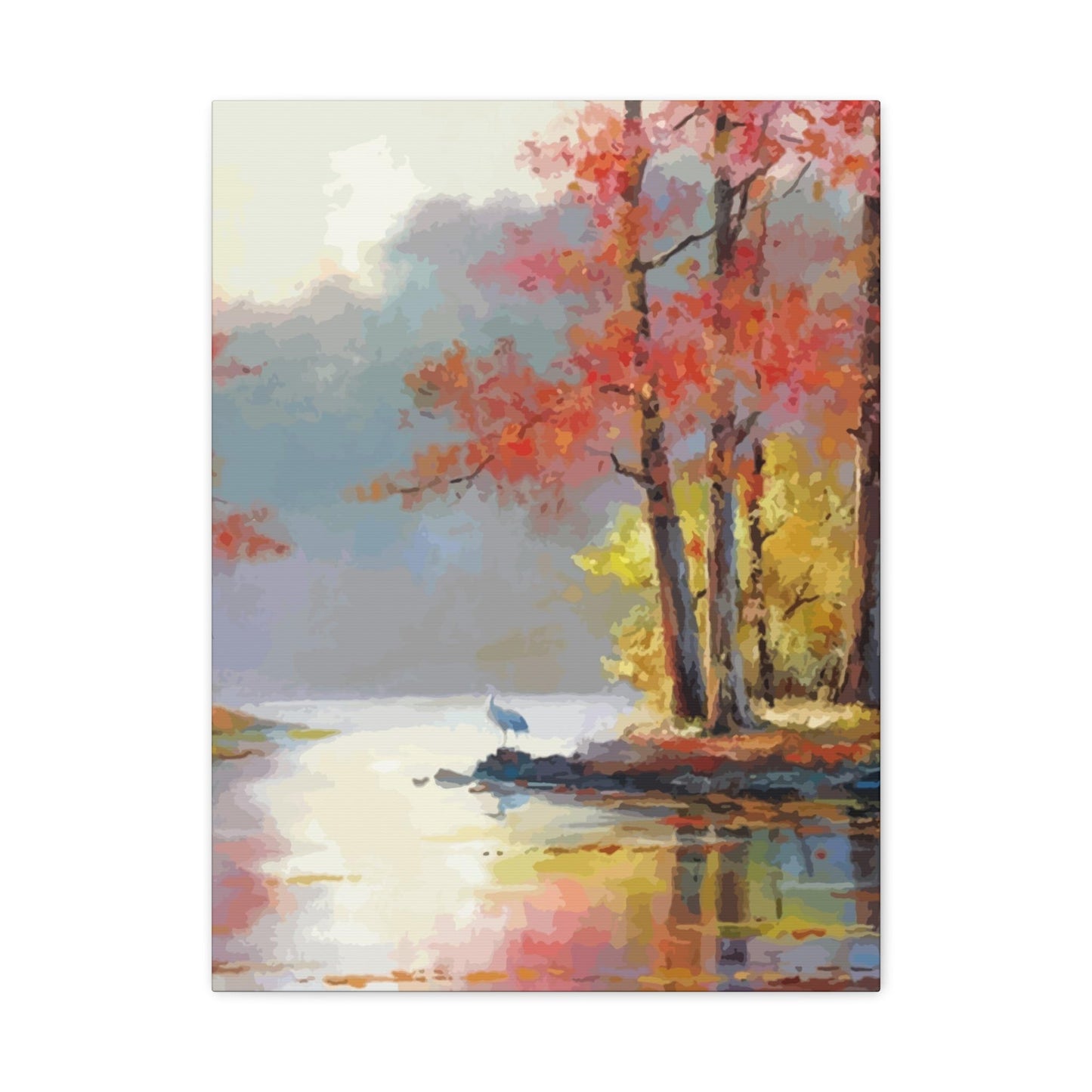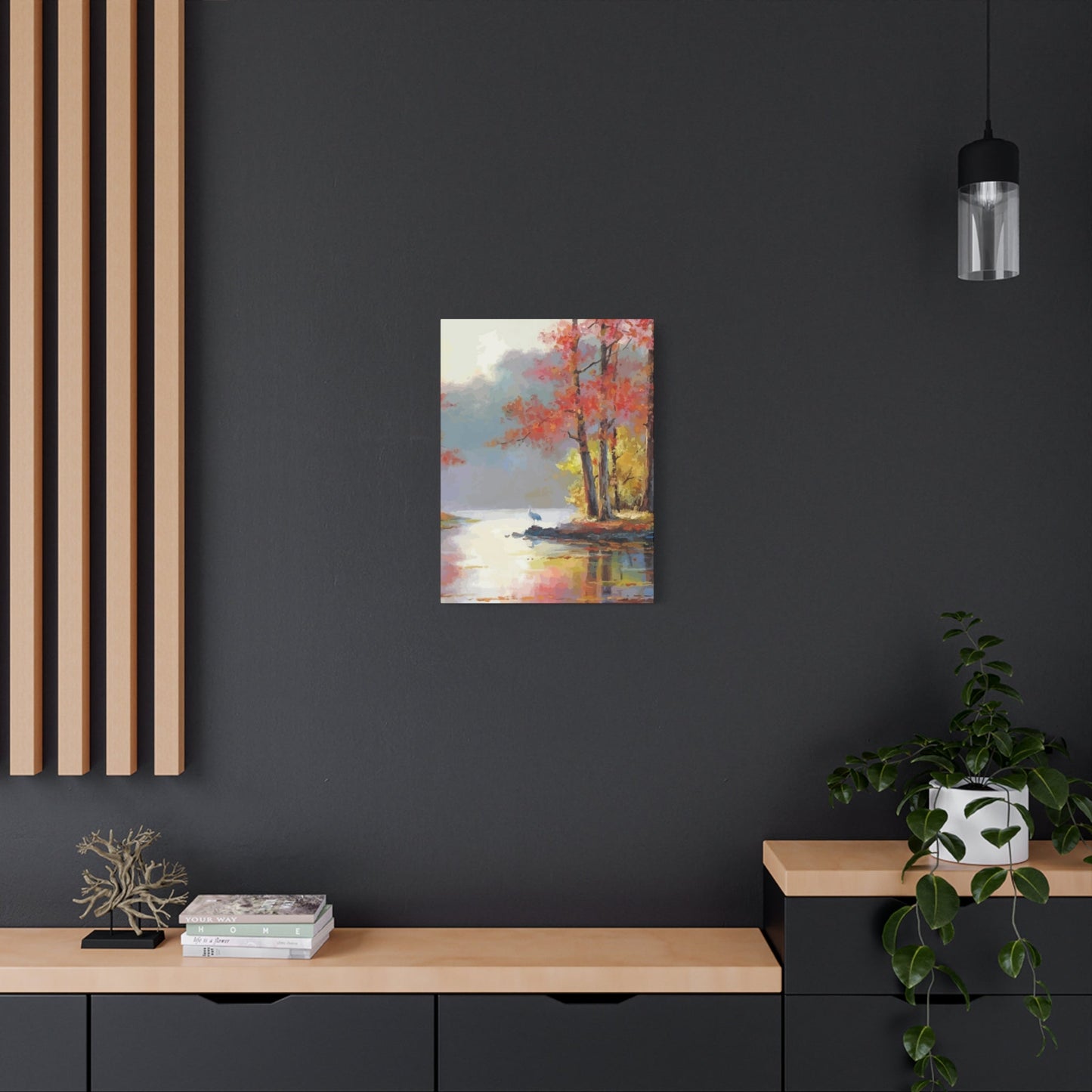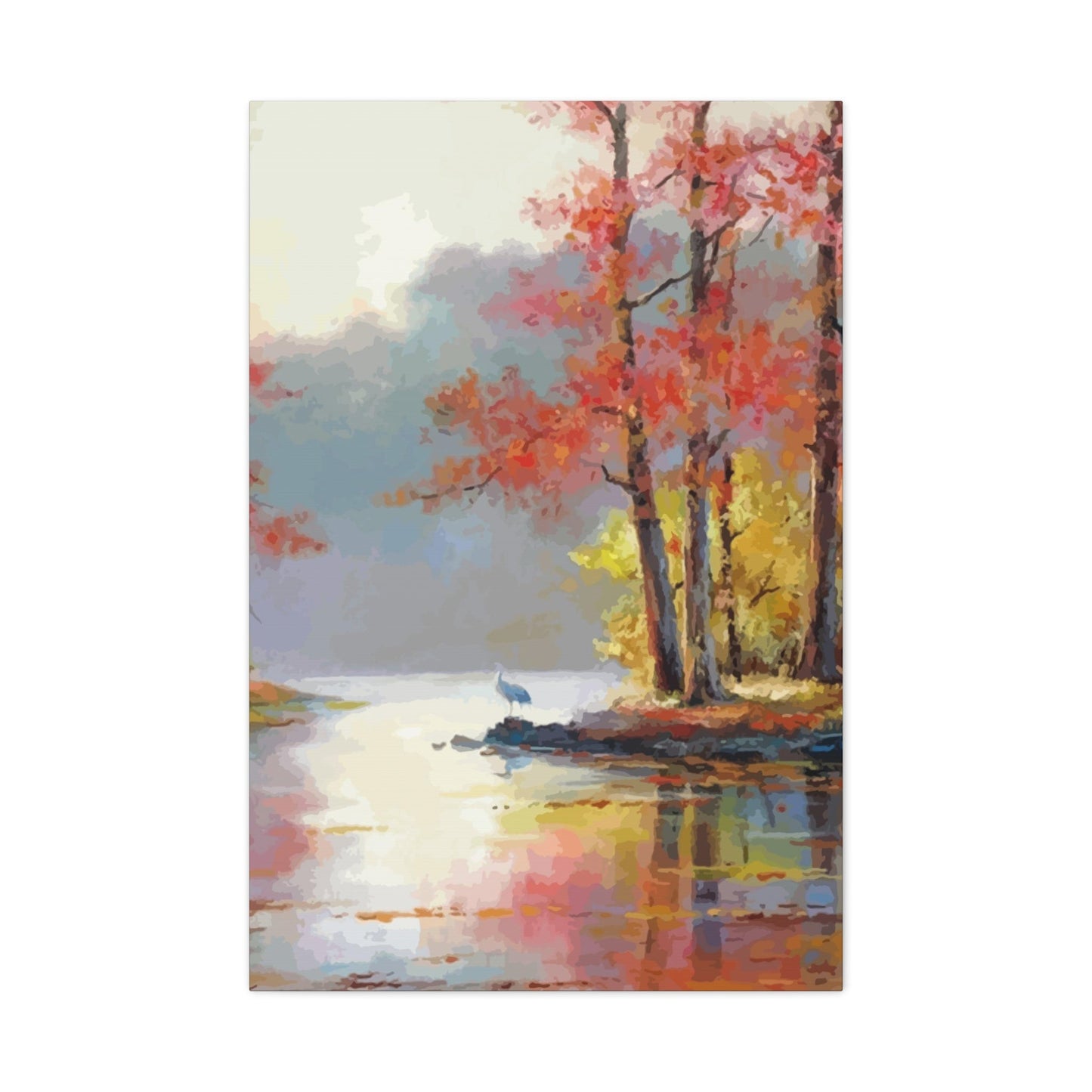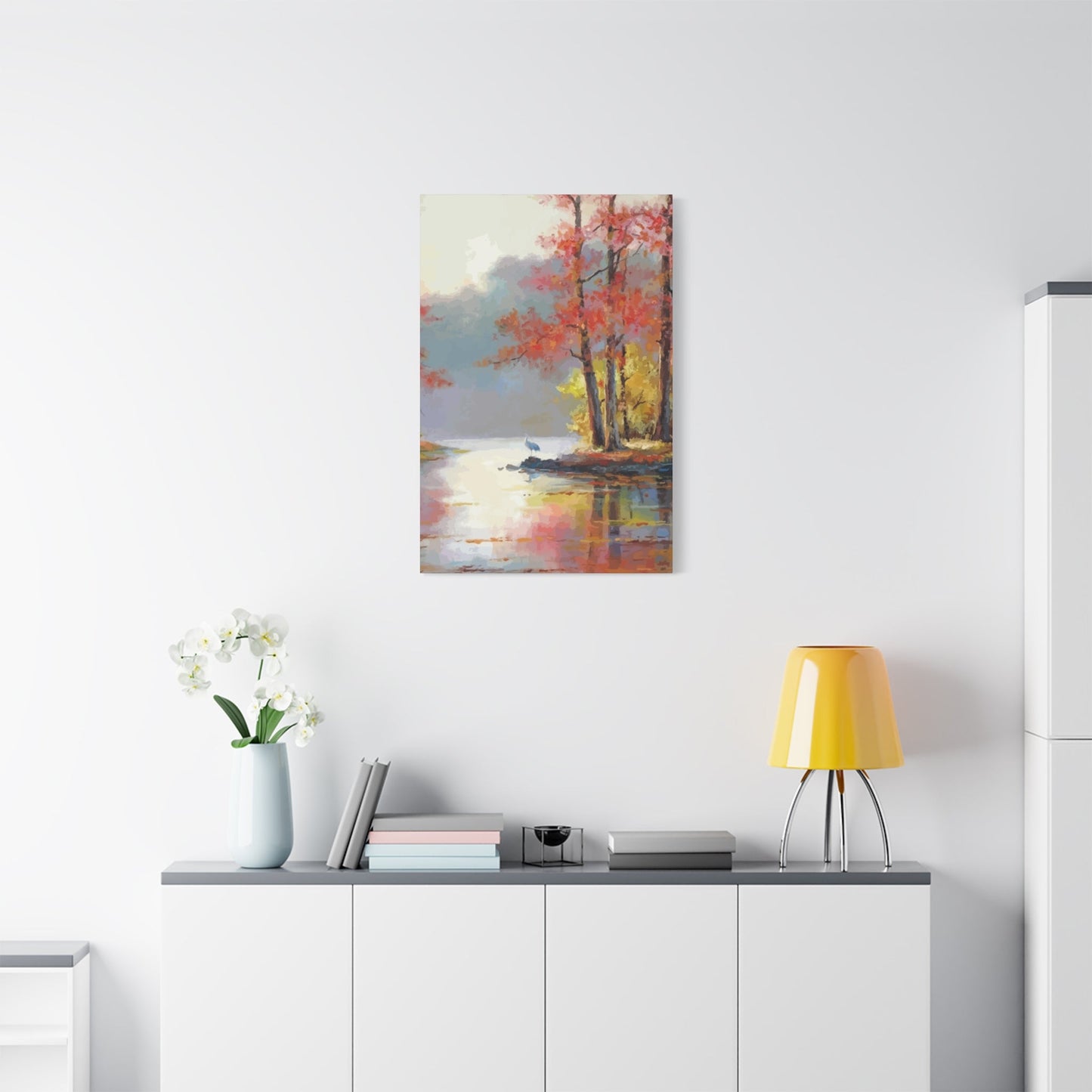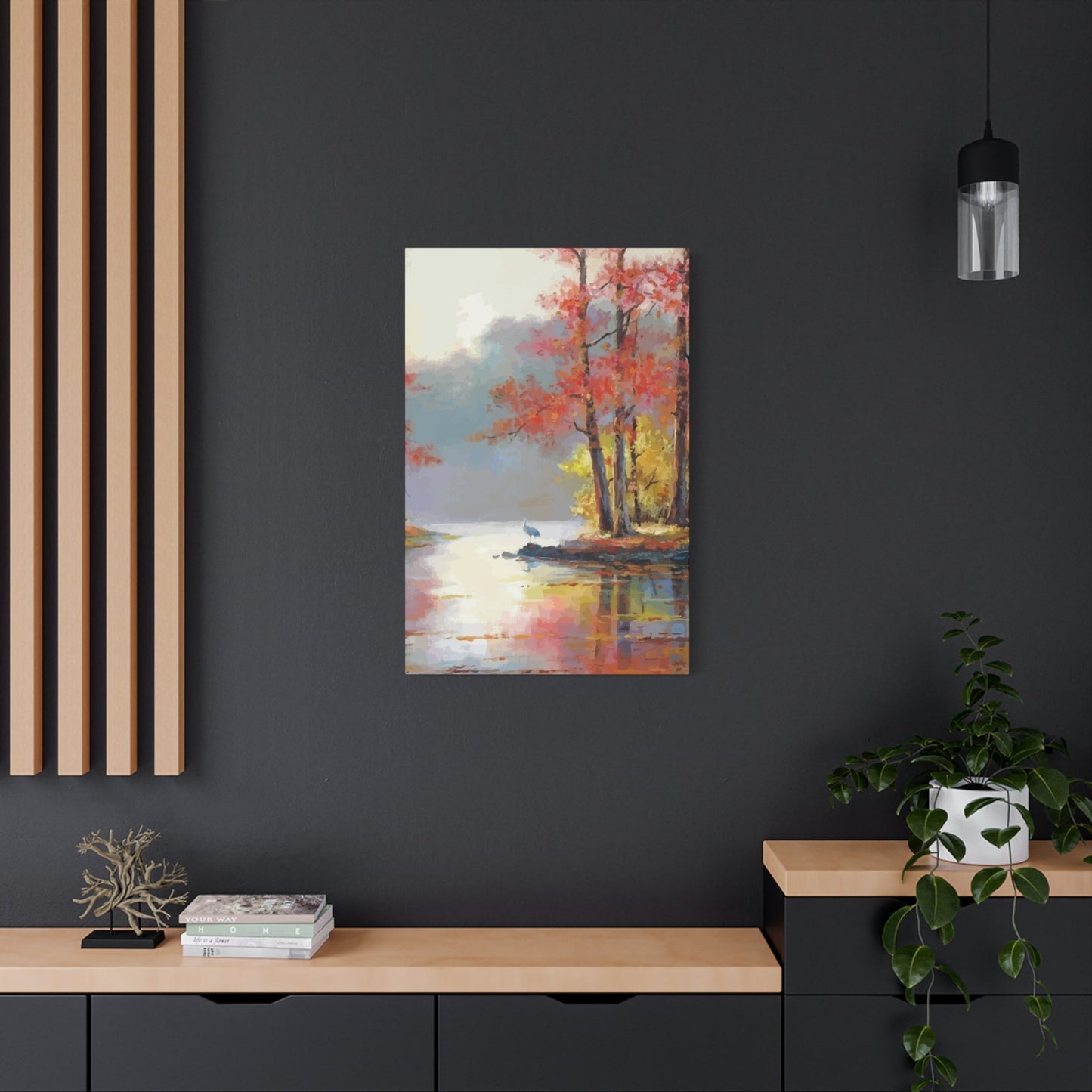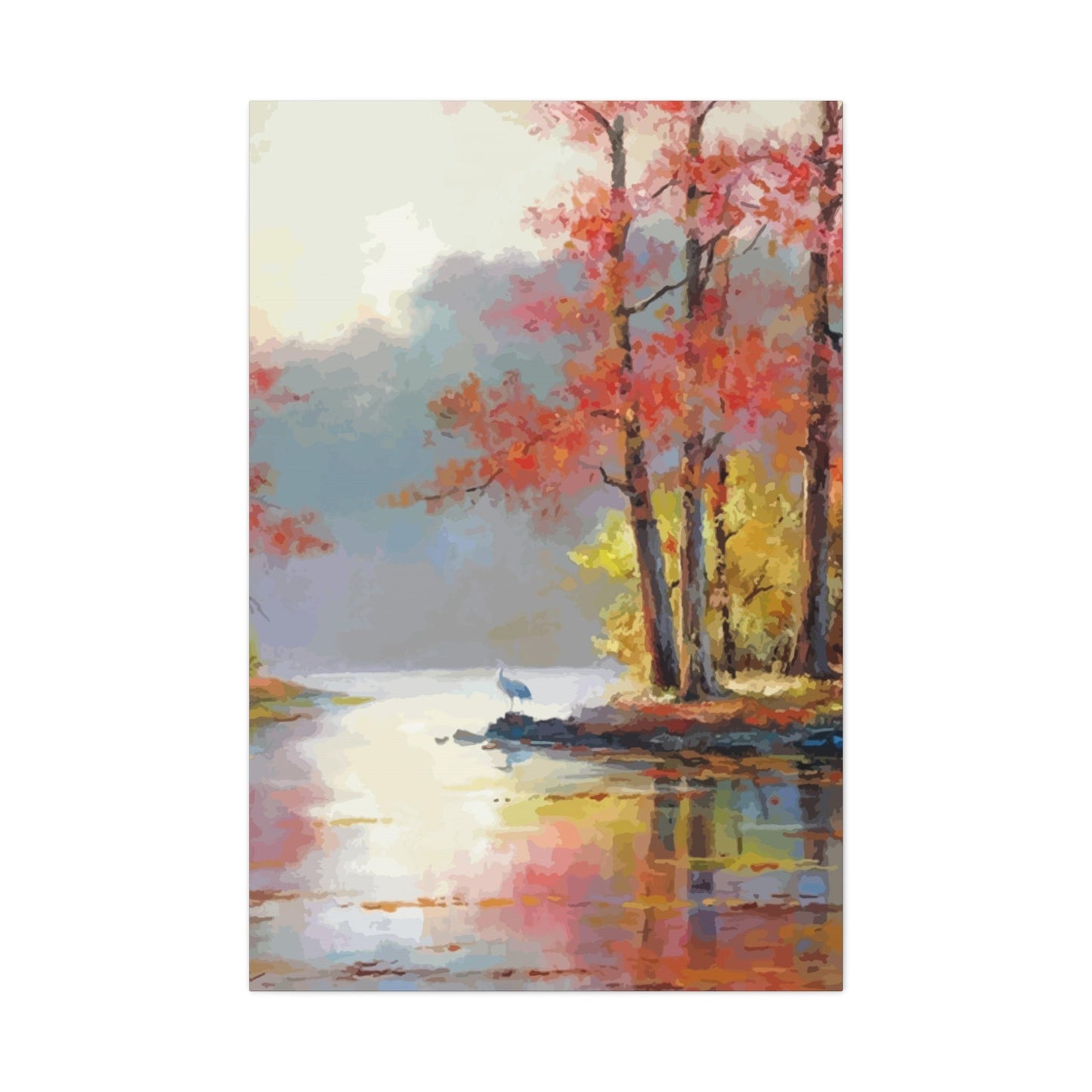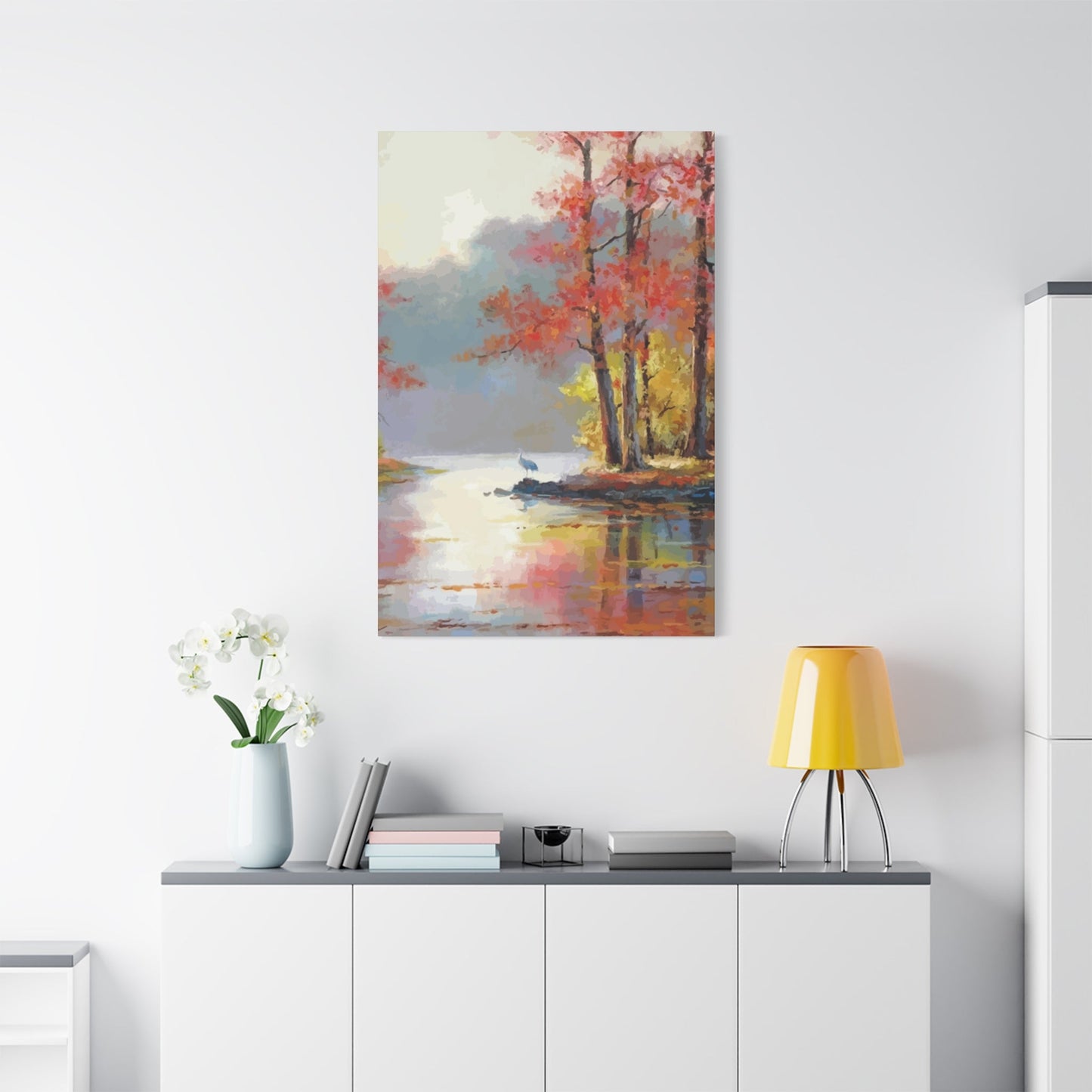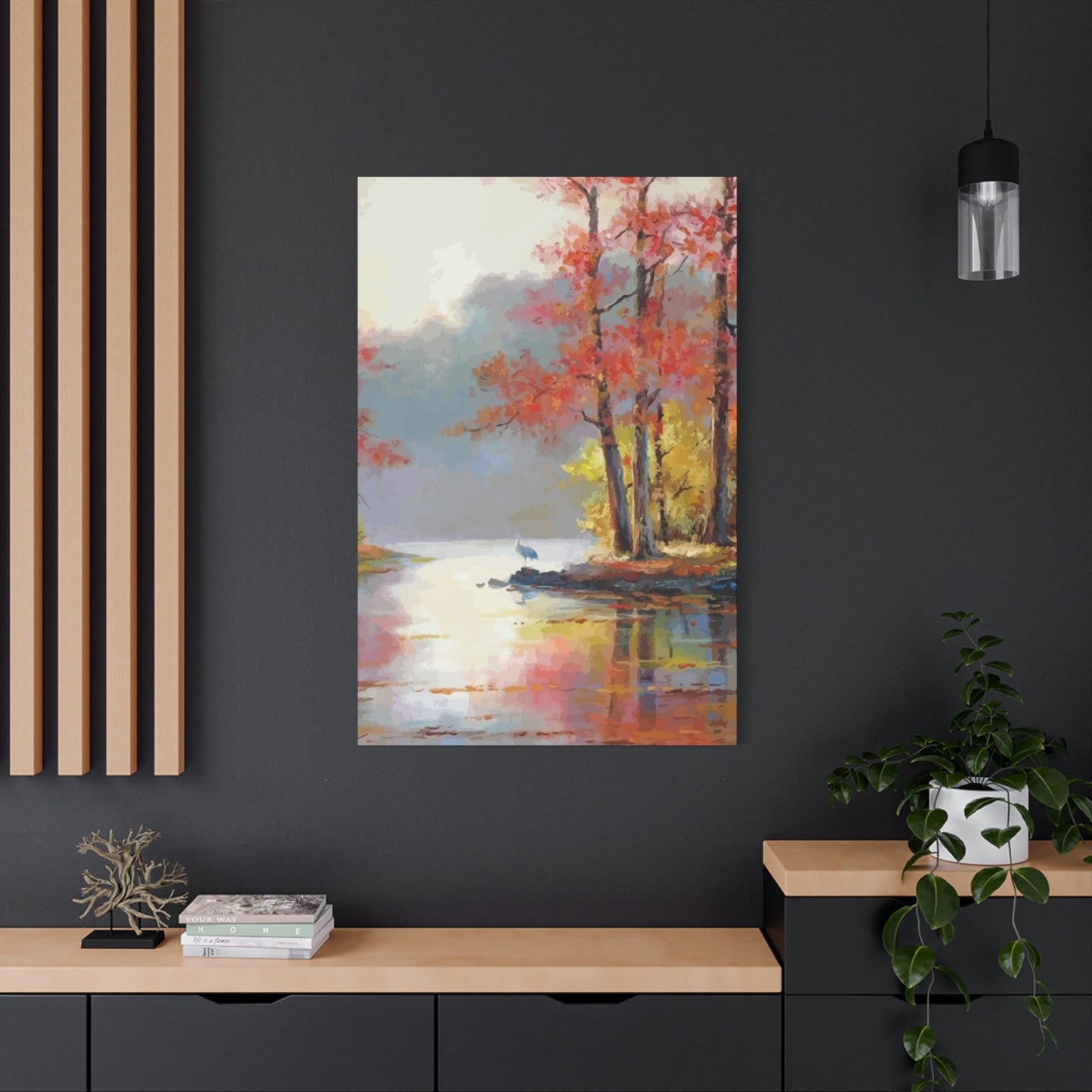Classic Traditional Wall Art That Brings Warmth and Heritage to Your Space
Traditional artwork has captivated collectors, decorators, and art enthusiasts for centuries, offering a connection to cultural heritage while providing timeless beauty that transcends fleeting design trends. These masterpieces, whether they depict pastoral landscapes, delicate floral arrangements, distinguished portraits, or carefully composed still life scenes, bring depth, sophistication, and narrative richness to any environment. The enduring appeal of these classic pieces lies not only in their technical excellence but also in their ability to evoke emotion, tell stories, and create atmospheric spaces that feel both refined and welcoming.
In an era where minimalist aesthetics and contemporary design often dominate interior spaces, traditional artwork offers a powerful counterbalance, providing visual warmth, historical context, and artistic depth that modern pieces sometimes lack. The careful brushwork, attention to compositional balance, and mastery of light and shadow characteristic of classic art forms create focal points that anchor rooms and provide endless visual interest. Whether you're furnishing a formal dining area, designing a professional workspace, creating a cozy living environment, or curating a gallery wall that spans artistic periods, understanding the nuances of traditional art styles can help you make informed decisions that enhance both the aesthetic and emotional impact of your spaces.
This comprehensive exploration delves into the multifaceted world of traditional artwork, examining everything from foundational themes and decorative strategies to preservation techniques and cultural significance. We'll journey through various artistic traditions from different corners of the globe, discover how to harmoniously blend classic pieces with contemporary design elements, and uncover the stories behind symbolic motifs that have appeared in artwork for generations. Whether you're a seasoned collector, a novice decorator, or simply someone who appreciates the beauty of classical artistic expression, this guide will provide valuable insights into selecting, displaying, and caring for traditional artwork that will enrich your environment for years to come.
Styling Spaces with Classical Paintings
Incorporating traditional paintings into contemporary living spaces requires thoughtful consideration of scale, color relationships, lighting conditions, and the overall design narrative you wish to create. These timeless pieces can serve as commanding focal points or contribute to layered, collected environments that tell stories about personal taste, cultural appreciation, and aesthetic sensibilities. The key to successful integration lies in understanding both the inherent qualities of the artwork and the characteristics of the space it will inhabit.
Beginning with assessment of your existing space establishes the foundation for successful artwork placement. Consider architectural features such as ceiling height, wall dimensions, window placement, and existing color schemes. Traditional paintings often feature rich, saturated colors and detailed compositions that command attention, so ensuring they have adequate visual breathing room prevents spaces from feeling cluttered or overwhelming. In rooms with high ceilings, larger works or vertically oriented pieces draw the eye upward, emphasizing the architectural grandeur, while horizontal compositions can make rooms feel wider and more expansive.
Color coordination between artwork and surrounding decor creates visual harmony without requiring exact matching, which can appear contrived. Instead, identify secondary or tertiary colors within the painting that can be echoed in textiles, accessories, or accent walls. A landscape featuring golden autumn tones might inspire warm honey-colored curtains or ochre throw pillows, while a painting dominated by cool blues and grays could coordinate beautifully with slate-colored upholstery or silver metallic accents. This approach allows the artwork to feel integrated into the space while maintaining its distinct visual identity.
Lighting dramatically affects how traditional paintings are perceived and should be carefully planned to enhance rather than damage artwork. Natural light should be controlled through curtains or blinds to prevent direct sunlight exposure, which can fade pigments and damage canvas over time. Artificial lighting options include picture lights mounted above frames, track lighting that can be adjusted to eliminate glare, or strategically placed floor and table lamps that provide indirect illumination. The goal is to provide consistent, moderate light levels that reveal the artwork's details without creating hot spots or reflective glare on varnished surfaces.
Creating visual balance within rooms requires attention to the visual weight distribution. A large, dark traditional painting creates substantial visual weight that should be balanced by furniture arrangement, additional artwork, or architectural features on opposite walls or areas. Symmetrical arrangements, where paintings are flanked by matching sconces or centered above mantels, create formal, traditional aesthetics particularly appropriate for dining rooms or formal living areas. Asymmetrical arrangements can feel more dynamic and contemporary while still honoring the classical nature of the artwork itself.
Layering traditional paintings with other decorative elements builds depth and interest without overwhelming spaces. Consider how artwork interacts with furniture placement, ensuring that sofas, tables, and chairs don't block significant portions of paintings. The traditional guideline suggests hanging artwork so that its center point aligns roughly with average eye level, typically between fifty-seven and sixty inches from the floor, though this can be adjusted based on ceiling height and viewing circumstances. In dining rooms where people are typically seated, slightly lower placement ensures comfortable viewing during meals.
Proper Framing Techniques for Classical Art
The frame surrounding a traditional painting serves multiple crucial functions beyond simple decoration. It protects the artwork's edges, provides structural support, creates visual separation between the piece and its surroundings, and either enhances or diminishes the overall impact of the work itself. Selecting appropriate framing for traditional artwork requires understanding of historical conventions, conservation principles, and aesthetic relationships between frame styles and painting characteristics.
Historical frame styles evolved alongside artistic movements, with each era developing distinctive approaches to frame design that complemented contemporary painting techniques. Renaissance frames featured elaborate carved and gilded designs incorporating architectural elements like columns and pediments, reflecting the period's classical revival. Baroque and Rococo frames became increasingly ornate with scrollwork, shells, and asymmetrical designs that matched the drama and movement in paintings from those periods. Neoclassical frames returned to simpler, more restrained designs with clean lines and minimal ornamentation, while Victorian era frames often featured heavy, dark woods with intricate corner decorations.
Matching frame styles to artwork periods creates visual harmony and historical authenticity. A painting from the Dutch Golden Age often looks most appropriate in a simple wooden frame with minimal ornamentation, reflecting the Protestant aesthetic that influenced that era's art production. Impressionist works frequently suit frames with broader, flatter profiles that don't compete with the paintings' loose brushwork and emphasis on light and color. Academic paintings depicting historical or mythological subjects often benefit from more elaborate gilded frames that underscore their formal, prestigious nature.
Conservation framing protects artwork from environmental damage while ensuring long-term preservation. This approach includes using acid-free matting materials that won't discolor or damage artwork over time, UV-protective glazing that filters harmful light wavelengths, and proper spacing between glass and artwork surface to prevent moisture accumulation and mold growth. For oil paintings on canvas, frames should allow for the natural expansion and contraction of canvas with humidity changes, typically accomplished through proper mounting that doesn't constrain the stretched canvas too rigidly.
Frame proportions significantly impact how artwork is perceived. Frames that are too narrow may fail to provide adequate visual separation from walls, causing artwork to appear lost or diminished, particularly if wall colors are similar to painting tones. Conversely, excessively wide frames can overwhelm smaller works, making the frame rather than the artwork the dominant visual element. General guidelines suggest frame widths between two and six inches for most traditional paintings, with larger works generally accommodating wider frames more successfully than smaller pieces.
Renowned Masters and Their Distinctive Approaches
Understanding influential traditional artists and their characteristic styles enriches appreciation for classical artwork while providing valuable context for collecting and decorating decisions. These masters, through technical innovation, thematic exploration, and distinctive visual approaches, established conventions that continue influencing artists and resonating with audiences centuries after their creation.
Rembrandt van Rijn exemplified the Dutch Golden Age with his mastery of chiaroscuro, the dramatic contrast between light and shadow. His portraits, whether of wealthy merchants, biblical figures, or himself across his aging process, demonstrated profound psychological insight combined with technical brilliance. The warm, golden light characteristic of his work created intimate, introspective atmospheres that drew viewers into contemplative engagement with subjects. His innovative use of impasto, applying paint in thick layers that caught and reflected light, added dimensional quality to surfaces that seemed to glow from within.
Johannes Vermeer, another Dutch Golden Age master, created scenes of domestic tranquility characterized by extraordinary light quality and meticulous attention to detail. His limited output of approximately thirty-six surviving paintings makes each work precious, depicting quiet moments of everyday life with jewel-like color intensity and compositional perfection. His use of camera obscura likely contributed to the photographic quality of his spatial rendering and the distinctive way light seems to emanate from within his painted environments rather than merely illuminating them externally.
Peter Paul Rubens brought Baroque dynamism to traditional subjects ranging from religious scenes to mythological narratives and aristocratic portraits. His paintings pulsed with movement, featuring robust figures arranged in complex, spiraling compositions. His workshop system, where assistants handled different specializations from landscape backgrounds to drapery painting, allowed tremendous productivity while maintaining consistent quality. The term Rubenesque, derived from his preference for voluptuous female figures, reflects his departure from idealized Renaissance proportions toward more naturalistic, vigorous human forms.
Joseph Mallord William Turner revolutionized landscape painting by prioritizing atmospheric effects and emotional responses over topographical accuracy. His early works demonstrated mastery of traditional landscape conventions, but his later paintings dissolved forms into swirling masses of light and color that anticipated Impressionism. His exploration of sublime natural phenomena, from storms at sea to burning buildings and dramatic sunsets, created works that functioned as much as emotional experiences as visual records.
Botanical Designs in Traditional Wall Decorations
Floral motifs have adorned traditional artwork across cultures and centuries, serving purposes ranging from pure decoration to complex symbolic communication. These botanical elements, whether featured as primary subjects in dedicated flower paintings or incorporated as decorative elements in larger compositions, bring natural beauty indoors while carrying layers of meaning that enrich their visual appeal.
Dutch and Flemish flower paintings of the seventeenth century established conventions for botanical art that influenced subsequent traditions. These elaborately composed arrangements featured flowers that could never bloom simultaneously in nature, combining spring tulips with summer roses and autumn dahlias in impossible bouquets that demonstrated both artistic skill and botanical knowledge. The meticulous rendering of individual petals, leaves, and stems created images of such precision that they served scientific documentation purposes alongside their aesthetic functions. These paintings often incorporated insects, water droplets, and decaying elements that added both realism and symbolic references to life's transience.
Symbolic meanings associated with specific flowers added narrative depth to decorative compositions. Roses traditionally represented love in various forms, from red roses symbolizing passionate romantic attachment to white roses indicating purity and innocence. Lilies carried associations with religious purity and resurrection, making them frequent elements in devotional artwork. Poppies suggested sleep, death, and remembrance, while irises represented hope, faith, and wisdom. Understanding these symbolic associations allows viewers to decode messages embedded within seemingly straightforward decorative compositions.
Chinoiserie and botanical illustration traditions brought exotic flora into European decorative arts through trade connections with Asia and colonial botanical expeditions. Hand-painted wallpapers and decorative panels featured unfamiliar plants like peonies, chrysanthemums, and cherry blossoms rendered in styles that blended European painting techniques with Asian artistic conventions. Scientific botanical illustration developed sophisticated techniques for accurately documenting plant species, creating images that balanced scientific precision with artistic beauty. These watercolors and engravings, originally created for scientific publications, now function as beautiful decorative elements in their own right.
Incorporating floral traditional artwork into contemporary spaces provides opportunities for introducing natural elements and color variation. A large-scale floral still life can serve as a room's color palette foundation, with hues from petals, leaves, and background elements echoed in textiles, painted surfaces, and accessories. Smaller botanical prints work beautifully in arrangements of multiple images, creating gallery walls that celebrate natural diversity while maintaining visual cohesion through shared subject matter and consistent framing approaches.
Seasonal rotation of floral artwork allows spaces to reflect changing natural cycles while keeping interiors feeling fresh and current. Spring bulb paintings featuring tulips, daffodils, and crocuses can be displayed during early months, replaced by summer compositions of roses, peonies, and garden flowers, then autumn arrangements with dahlias, chrysanthemums, and harvest elements, and finally winter scenes featuring evergreens, holly, and amaryllis. This approach requires storage space and rotation effort but creates dynamic interiors that respond to seasonal shifts.
Scenic Views That Maintain Timeless Appeal
Landscape paintings have captivated audiences for centuries, offering windows onto natural environments ranging from pastoral agricultural scenes to dramatic wilderness vistas. These works transcend simple documentation to become meditations on humanity's relationship with nature, explorations of light and atmospheric effects, and expressions of cultural values regarding land, beauty, and the proper relationship between civilization and wilderness.
Pastoral landscapes depicting idealized rural scenes represent one of the most enduring traditional landscape categories. These compositions typically feature gently rolling hills, grazing livestock, rustic buildings, and agricultural workers engaged in timeless activities. The works often bathe these scenes in golden afternoon light that suggests harmony, abundance, and peaceful coexistence between humans and their environment. Italian campagna scenes, Dutch polder landscapes, and English countryside views all exemplify this tradition, each bringing regional characteristics to the broader pastoral tradition.
Sublime wilderness landscapes emerged particularly during the Romantic period, depicting nature's overwhelming power and grandeur through compositions featuring towering mountains, turbulent seas, ancient forests, and dramatic weather effects. These works positioned human figures, when present, as tiny elements dwarfed by their surroundings, emphasizing nature's magnitude and humanity's relative insignificance. The emotional impact of these paintings stemmed from their ability to evoke feelings of awe, wonder, and even terror before natural forces beyond human control.
Marine paintings formed a distinct landscape subcategory, particularly important in maritime nations like the Netherlands and England. These works ranged from tranquil harbor scenes and beach views to dramatic shipwreck narratives and naval battle depictions. The technical challenge of rendering water in various conditions, from glassy calm to storm-tossed waves, attracted artists who used these subjects to demonstrate their mastery. The symbolic resonance of sea imagery, representing journeys, commerce, danger, and the boundary between known and unknown realms, added conceptual depth to these visually striking works.
Seasonal landscape cycles offered artists opportunities to explore changing light conditions, weather effects, and the passage of time. Winter scenes with snow-covered fields, bare trees, and figures engaged in cold-weather activities contrasted dramatically with summer views of lush vegetation, bright light, and outdoor leisure. These works often carried symbolic associations, with spring representing renewal and hope, summer suggesting abundance and vitality, autumn evoking harvest and maturity, and winter implying dormancy or death before spring's rebirth.
Topographical accuracy versus idealized composition represents a fundamental tension in landscape painting. Some artists prioritized faithful recording of specific locations, creating works that functioned as visual documentation of particular places at particular moments. Other painters freely rearranged landscape elements to create idealized compositions that served aesthetic rather than documentary purposes. Hybrid approaches combined recognizable landmarks with adjusted proportions, added dramatic lighting, or inserted classicizing elements like ancient ruins to create landscapes that balanced reality with artistic vision.
Formal Portraiture for Sophisticated Interiors
Portrait paintings bring human presence and psychological depth to interior spaces, creating focal points that engage viewers through direct or averted gazes, elaborate costumes, symbolic objects, and careful attention to individual character. Traditional portraits range from formal state commissions documenting political power to intimate character studies exploring human psychology, each type offering distinct qualities suitable for different interior contexts and decorative purposes.
Formal aristocratic portraits established conventions that communicated social status, political authority, and family lineage through careful attention to costume, setting, pose, and symbolic attributes. Subjects appeared in elaborate clothing that demonstrated wealth through expensive fabrics, intricate details, and fashionable styles. Settings often included classical architectural elements, luxurious furnishings, and landscape views through windows or as backgrounds, positioning subjects within contexts that reinforced their social position. Coats of arms, heraldic symbols, and allegorical figures sometimes accompanied primary subjects, creating complex visual statements about identity, power, and social networks.
Bourgeois portraits documented the rising merchant and professional classes, adapting aristocratic conventions to different social contexts and values. These works emphasized respectability, professional success, and family bonds rather than inherited titles and political authority. Group portraits of civic guards, medical professors, and charitable organization administrators celebrated collective achievement and social cooperation. The attention to contemporary costume, interior settings, and professional attributes in these works provides valuable historical documentation while the artists' psychological insight transcends mere recording to create compelling human presences.
Intimate character portraits prioritized psychological depth over social documentation, using facial expressions, body language, and atmospheric lighting to suggest interior emotional states. These works, often depicting artists' family members, friends, or themselves, permitted exploration of human vulnerability, contemplation, age, and personality in ways that formal commissioned portraits typically excluded. The direct engagement between subject and viewer in many such works creates powerful connections that make these paintings particularly effective focal points in private spaces like studies and bedrooms.
Children's portraits evolved from miniature adult representations to more naturalistic depictions acknowledging childhood as a distinct life stage. Earlier works often showed children in scaled-down adult clothing posed formally, while later traditions depicted them at play, with toys and pets, or in family groups that emphasized affection and innocence. The emotional resonance of children's portraits makes them particularly appealing for family homes, though their effectiveness depends on quality of execution, as poorly painted children's portraits can appear unsettling rather than charming.
Arranged Object Paintings for Comfortable Spaces
Still life paintings, depicting arrangements of inanimate objects, offer viewers opportunities for sustained contemplation of form, color, texture, and symbolic meaning. These compositions, ranging from lavish displays of luxury goods to modest arrangements of everyday items, create intimate focal points particularly well-suited to smaller rooms and spaces where their detailed execution rewards close viewing.
Dutch Golden Age still life paintings established enduring conventions for the genre, featuring elaborate arrangements of exotic foods, precious metalwork, glassware, and flowers. These works demonstrated painters' technical virtuosity through their ability to render various material textures convincingly while often incorporating memento mori elements reminding viewers of mortality and life's transience. Wilting flowers, half-peeled lemons, overturned glasses, and extinguished candles suggested that wealth and beauty inevitably succumb to time's passage, adding philosophical depth to visually sumptuous compositions.
Kitchen and market scenes depicted more modest subjects, showing preparations for meals, fresh produce, hanging game, and simple ceramic vessels. These works celebrated abundance while documenting historical foodways and domestic life. The democratic subject matter made these paintings accessible to broader audiences than aristocratic portraiture or history paintings, while their technical demands ensured they remained serious artistic achievements. The warm earth tones and domestic associations of these works make them particularly appropriate for kitchen and dining area display.
Breakfast and dessert pieces formed distinct still life subcategories, depicting partially consumed meals with characteristic objects. Breakfast pieces typically showed bread, cheese, meat, and beer or wine in simple arrangements suggesting interrupted meals. Dessert pieces featured sweets, fruits, nuts, and wine in more elaborate presentations suggesting luxury and celebration. The narrative implications of these interrupted moments invited viewers to imagine the human presence just outside the frame, creating psychological engagement beyond pure visual pleasure.
Blending Classical Art with Contemporary Design
Successfully integrating traditional paintings into modern interiors requires balancing respect for artwork's historical character with sensitivity to contemporary design aesthetics. This integration, when handled skillfully, creates layered, sophisticated spaces that feel collected rather than decorated, demonstrating cultural awareness and personal taste that transcends single style categories.
Contrast strategies embrace differences between traditional artwork and contemporary settings, using the tension between old and new to create visual interest and dynamism. A richly colored Renaissance religious painting might hang in a minimalist white-walled space with sleek contemporary furniture, the stark contrast emphasizing both the painting's historical richness and the room's modern simplicity. This approach requires confidence and restraint, ensuring that neither element overwhelms the other but rather that they coexist in productive dialogue.
Bridge element strategies introduce transitional pieces that share characteristics with both traditional and contemporary aesthetics. Mid-century modern furniture, with its emphasis on clean lines and quality materials, often complements traditional artwork while maintaining contemporary appeal. Traditional textiles like Persian rugs or antique tapestries can mediate between classical paintings and modern architecture. Mixing frame styles, perhaps using simple contemporary frames for traditional artwork, can help pieces feel integrated into modern contexts while maintaining their essential character.
Color as a unifying element creates visual connections between traditional paintings and contemporary interiors. Identifying a single color that appears in both painting and modern furnishings provides visual continuity that helps disparate elements feel intentionally related. This might involve selecting contemporary upholstery in a blue that echoes background tones in a traditional landscape or choosing modern accent pieces in metallic finishes that relate to gilded frame details.
Scale and proportion considerations prevent traditional artwork from appearing lost in contemporary spaces characterized by clean expanses and minimalist sensibilities. Large-scale traditional paintings hold their own in modern rooms with high ceilings and minimal ornamentation, while smaller works might be grouped or paired with contemporary pieces to create adequate visual presence. Alternatively, giving smaller traditional works generous surrounding empty wall space creates breathing room that emphasizes their importance despite modest size.
Mixing artwork from different periods creates collected, curated environments suggesting personal history and cultural sophistication. A traditional portrait might hang alongside abstract contemporary works, the combination suggesting broad artistic appreciation rather than narrow stylistic allegiance. This approach requires careful attention to color relationships, scale progression, and visual balance to prevent spaces from feeling chaotic or confused. The unifying elements might include consistent framing across periods or a limited color palette that appears throughout the mix.
Temporal Motifs in Traditional Wall Decorations
Seasonal themes in traditional artwork celebrate cyclical natural changes, agricultural rhythms, and human activities associated with different times of year. These works range from allegorical representations of seasons as personified figures to naturalistic depictions of seasonal landscapes and genre scenes showing period-specific activities. Rotating seasonal artwork creates dynamic interiors responding to annual cycles while maintaining tradition-based aesthetic approaches.
Spring representations emphasize renewal, growth, and fertility through imagery of flowering plants, newborn animals, agricultural planting activities, and clearing weather. Allegorical spring figures often appear as young maidens crowned with flowers, surrounded by blooming gardens and baby animals. Landscape paintings feature trees in fresh leaf, meadows filled with wildflowers, and farmers preparing fields for planting. Genre scenes might depict spring festivals, courtship activities, or children playing in newly accessible outdoor environments after winter confinement.
Summer artwork celebrates abundance, warmth, and outdoor leisure through depictions of lush vegetation, ripening crops, beach scenes, and recreational activities. Allegorical summer takes mature adult form, crowned with wheat or bearing agricultural implements, representing productive maturity. Landscapes show vegetation at peak fullness under bright sunlight, while genre scenes depict harvest beginnings, outdoor markets, swimming, boating, and picnicking. The warm color palettes and bright light characteristic of summer paintings create energetic, optimistic atmospheres.
Autumn representations focus on harvest completion, natural abundance, and preparation for winter through imagery of gathered crops, falling leaves, hunting scenes, and autumnal color transformations. Allegorical autumn appears as a mature figure bearing fruits, vegetables, and wine, celebrating agricultural success. Landscapes feature dramatic foliage colors, harvested fields with remaining stubble, and atmospheric effects of cooler, more oblique light. Genre scenes show grape harvesting, market selling, preserving activities, and holiday celebrations marking harvest season's completion.
Winter depictions explore dormancy, cold, festivity, and survival challenges through snow-covered landscapes, indoor gatherings, winter sports, and holiday celebrations. Allegorical winter takes elderly form, sometimes shown near fires or bundled against cold, representing the year's final stage before renewal. Landscapes emphasize bare trees, frozen water, snow effects, and the particular quality of winter light with its long shadows and cool tones. Genre scenes feature ice skating, sledding, indoor celebrations, and activities necessitated by cold weather like woodcutting or animal feeding.
Holiday-specific artwork provides opportunities for focused seasonal display. Christmas scenes showing nativity narratives, winter festivals, gift-giving, and family gatherings offer traditional imagery for December display. Easter artwork featuring religious resurrection themes or spring celebration imagery suits springtime exhibition. Harvest festival scenes work beautifully during autumn months. This approach requires storage space for off-season pieces but creates significant visual impact through concentrated seasonal expression.
Traditional Art's Significance in Cultural Heritage
Traditional artwork functions as a crucial cultural heritage, documenting historical worldviews, technical knowledge, aesthetic values, and social structures while providing continuity linking contemporary societies to their pasts. Understanding artwork's cultural heritage dimensions enriches appreciation beyond purely aesthetic responses while highlighting preservation and interpretation responsibilities.
Historical documentation through artwork provides invaluable information about past material culture, social hierarchies, daily activities, and environmental conditions. Costume details in portraits document fashion evolution, textile production capabilities, and social distinctions communicated through dress. Interior scenes reveal furniture styles, domestic arrangements, and economic conditions reflected in household goods. Landscape paintings record agricultural practices, architectural forms, and even topographical features before modern development. While recognizing that artistic conventions and idealization influenced these depictions, scholars mine traditional artwork for historical insights unavailable through written sources alone.
Technical knowledge transmission occurs through studying traditional painting methods, materials, and procedures. Contemporary artists and conservators examining historical works gain understanding of pigment preparation, binding media formulation, ground application, layering sequences, and finishing techniques. This technical heritage informs both artistic practice and conservation treatments, ensuring that restoration interventions employ period-appropriate materials and methods. The craft knowledge embedded in traditional paintings represents accumulated wisdom refined across generations, deserving preservation and transmission alongside the finished works themselves.
Cultural identity and continuity connect communities to artistic traditions expressing shared values, beliefs, and aesthetic preferences. Regional painting traditions from Flemish precision to Venetian colorism, from Chinese landscape conventions to Indian miniature painting practices, embody distinctive cultural approaches to visual representation. Maintaining these traditions through study, display, and contemporary interpretation strengthens cultural identity while fostering cross-cultural understanding as diverse traditions interact and influence each other.
Educational functions of traditional artwork expose audiences to historical periods, artistic techniques, cultural values, and visual literacy skills. Museum displays, school curricula, and public art programs use traditional paintings to teach history, develop observation skills, and foster aesthetic appreciation. The narrative richness and technical virtuosity characteristic of much traditional artwork provides abundant material for educational engagement across age groups and knowledge levels. Accessibility through museum collections and digital reproductions democratizes this educational resource beyond elite collector circles.
Economic value in art markets supports museum acquisitions, conservation programs, scholarship, and contemporary artistic production. The substantial monetary values attached to important traditional paintings enable major museums to build collections, fund research, and support educational programming. Auction results and market transactions generate public interest in art history while providing collectors with financial incentives for preservation and public access. The economic ecosystem surrounding traditional art, from auction houses to conservation studios to art history departments, employs specialists maintaining and interpreting cultural heritage.
Vintage Wall Decorations and Acquisition Sources
Antique artwork, typically defined as items over one hundred years old, offers collectors opportunities to own genuine historical artifacts while decorating with pieces possessing authentic age and provenance. Locating, evaluating, and acquiring antique artwork requires knowledge of markets, authentication methods, and available resources ranging from auction houses to estate sales.
Auction houses from major international firms to regional establishments offer authenticated antique artwork with documented provenance and expert evaluations. Major auction houses provide detailed catalogs with condition reports, provenance histories, and estimated values, while auction previews allow personal examination. Bidding processes, whether in-person, telephone, or online, follow established procedures with buyer's premiums typically adding twenty to twenty-five percent to hammer prices. Auction purchases offer transparency and authentication confidence but lack negotiation flexibility of private sales.
Antique dealers specializing in artwork curate selections reflecting their expertise and market knowledge, offering personalized service and often providing guarantees of authenticity. Established dealers maintain reputations requiring accurate descriptions and ethical practices, making them relatively safe acquisition sources. Prices typically exceed auction values but include dealer expertise, return privileges, and sometimes restoration services. Building relationships with reputable dealers provides access to new acquisitions before public advertising and valuable educational resources.
Estate sales and house sales offer opportunities to find antique artwork in original contexts, sometimes at advantageous prices when liquidation necessitates quick sales. These venues require more buyer expertise as authentication responsibility falls largely on purchasers. Careful examination for condition issues, signature verification, and style appropriateness to purported age and origin prevents costly mistakes. Competition can be intense for quality pieces, requiring early arrival and quick decision-making.
Antique shows and fairs concentrate multiple dealers in temporary venues, allowing comparison shopping and access to specialists from various regions. Major shows attract high-quality dealers offering vetted merchandise, while smaller regional shows present mixed quality requiring careful evaluation. The social atmosphere of antique shows facilitates dealer interactions, educational opportunities, and networking with other collectors. Admission fees and limited duration require focused shopping approaches maximizing available time.
Online marketplaces from specialized art platforms to general antique sites expand access beyond local markets while presenting authentication and condition assessment challenges. Detailed photographs, seller reputation systems, and return policies provide some protection, but physical inspection remains impossible before purchase. Online buying works best for collectors with sufficient knowledge to evaluate offerings remotely or when dealing with established dealers maintaining online presences alongside physical locations.
Museum deaccessions and nonprofit sales occasionally offer high-quality antique artwork when institutions sell duplicate holdings or pieces outside collection scopes. These sales provide ironclad provenance and typically excellent condition given museum care standards. Competition and pricing often reflect the desirability of museum provenance, but opportunities exist particularly with less fashionable periods or styles.
Authentication and condition evaluation require expertise or professional assistance before significant purchases. Obvious signs like anachronistic materials, inconsistent aging patterns, or stylistic incongruities suggest problems, but sophisticated forgeries deceive even experts. Professional appraisers, conservators, or art historians provide authentication opinions, condition assessments, and value estimates justifying their fees for substantial acquisitions. Scientific analysis including pigment testing, canvas examination, and radiography reveals information invisible to naked eyes.
Enhancing Living Rooms with Classical Pieces
Living rooms function as primary reception spaces where families gather and guests are entertained, making them ideal locations for displaying traditional artwork that establishes aesthetic tone and communicates cultural values. Successful living room art integration balances visual impact, functional considerations, and atmospheric creation through thoughtful selection and placement decisions.
Focal point establishment through artwork positioning draws eyes to intended locations while organizing spatial perception. Above fireplace mantels represents classic placement creating natural focal points enhanced by architectural features and eye-level positioning for seated viewers. The mantel provides practical display surface for complementary objects while the fireplace recess creates visual frame emphasizing artwork importance. Alternative focal points include walls opposite entry doors, positions above primary seating pieces, or dedicated gallery walls commanding attention through concentrated visual interest.
Scale relationships between artwork and furniture ensure visual balance and appropriate proportions. Traditional guidelines suggest artwork width should equal approximately two-thirds to three-quarters of furniture width below, preventing pieces from appearing lost above substantial sofas or overwhelming delicate console tables. In living rooms with multiple seating arrangements, multiple artwork pieces can define different zones while maintaining overall visual coherence through coordinated framing, subject matter, or color relationships.
Subject matter selection for living rooms typically favors approachable, universally appealing imagery over challenging or highly personal content. Landscapes provide broadly appealing subjects that don't dominate conversations or make guests uncomfortable. Still life works contribute decorative interest without demanding intense engagement. Portraits require careful selection, as dominant gazes or unfamiliar subjects can feel intrusive in social spaces. Abstract or non-objective traditional works like decorative panels or pattern-based compositions provide visual interest without narrative demands.
Color coordination between artwork and room schemes creates harmony while allowing artwork to introduce accent colors enlivening neutral palettes. Living rooms with neutral backgrounds benefit from richly colored traditional paintings introducing visual warmth and interest. Conversely, boldly colored rooms might display paintings with more subdued palettes preventing visual chaos. Seasonal textile changes through throw pillows, blankets, or curtains can rotate color emphasis, alternately highlighting different hues within multi-colored traditional paintings.
Lighting design significantly impacts both artwork visibility and room atmosphere. Ambient lighting should provide comfortable general illumination without creating glare on artwork surfaces. Accent lighting through picture lights, track lighting, or recessed spotlights highlights artwork while creating visual hierarchy emphasizing important pieces. Dimmers allow lighting adjustments matching different activities from bright task lighting for reading to subdued mood lighting for entertaining. Natural light requires management through window treatments preventing direct sunlight exposure while allowing filtered daylight to enhance daytime viewing.
Textile Wall Hangings as Decorative Elements
Traditional tapestries represent woven artwork created through labor-intensive processes producing durable textiles with complex imagery. These pieces, ranging from medieval narrative scenes to decorative floral patterns, offer unique aesthetic qualities distinguishing them from painted artwork while presenting specific display and preservation considerations.
Historical tapestry production concentrated in European centers from Flanders to France, creating luxury goods for aristocratic and royal patrons. Subjects ranged from religious narratives and mythological scenes to allegorical representations and verdure landscapes featuring lush vegetation. The collaborative production process involved designers creating cartoons (full-scale patterns), weavers translating designs into textile form, and sometimes painters adding details to finished tapestries. The substantial investment of time and materials made tapestries status symbols rivaling painting in prestige and value.
Technical characteristics distinguish tapestries from other textile forms and affect display considerations. Tapestries are woven rather than embroidered, with imagery created through weft threads completely covering warp threads. This structure creates relatively thick, durable textiles that drape naturally when hung. However, the weight requires substantial support systems preventing stress concentration that could cause tears. The textile nature makes tapestries vulnerable to insect damage, light fading, and environmental deterioration requiring vigilant preservation efforts.
Acoustic benefits from tapestries provide practical advantages beyond aesthetic appeal, particularly in spaces with hard surfaces creating sound reverberation. The textile mass absorbs sound waves, reducing echo and improving acoustic comfort in rooms with tile or hardwood floors, large windows, and minimal upholstered furniture. This practical function made tapestries popular in medieval stone castles and remains relevant in contemporary spaces with minimalist design aesthetics featuring sound-reflective materials.
Thermal insulation properties of tapestries, while less relevant with modern climate control, provided significant comfort benefits historically and retain value for energy-conscious homeowners. Tapestries hung on exterior walls create insulating air layers reducing heat transfer while adding minimal visual bulk. This function particularly benefits historic homes with inadequate insulation where aesthetic concerns prevent modern insulation installation that would alter architectural character.
Display methods for tapestries require supporting full weight while preventing stress concentration at hanging points. Traditional approaches using decorative rods through sewn sleeves or casings distribute weight across tapestry widths. Hook-and-loop fastener systems attached to wooden battens provide secure, weight-distributed hanging facilitating regular rotation and examination. Direct nailing or tacking damages textiles and should never be employed. Professional conservators can install appropriate hanging systems for valuable pieces ensuring secure display without damage risk.
Preservation challenges for tapestries include light sensitivity causing dye fading, insect damage from moths and carpet beetles, and environmental deterioration from humidity fluctuations. Conservation framing behind UV-filtering glazing protects smaller pieces while larger tapestries require controlled environments with filtered light, stable temperature and humidity, and regular pest monitoring. Rotation periods alternating display and storage rest extends tapestry lifespans, particularly for light-sensitive natural dyes showing fading susceptibility.
Appeal of Handcrafted Traditional Murals
Hand-painted murals transform architectural surfaces into artwork, creating immersive environments and permanent installations integrated with buildings themselves. Traditional mural techniques from fresco to decorative painting have adorned interior and exterior walls for millennia, offering scale and impact impossible with portable artwork while presenting unique creation and preservation challenges.
Fresco technique, applying pigments to wet plaster for chemical bonding creating remarkable durability, represents one of history's most important mural methods. True fresco requires rapid execution as plaster curing limits working time, demanding confident draftsmanship and color knowledge as corrections prove difficult. The resulting matte surface and subtle color ranges create distinctive aesthetic effects differing markedly from oil painting's richness. While new fresco creation remains rare given technical demands and specialized knowledge requirements, fresco conservation preserves important historical examples from ancient Roman works through Renaissance masterpieces.
Secco painting applies pigments to dry plaster or prepared wall surfaces using binding media similar to panel painting techniques. This approach allows more leisurely execution and easier corrections but lacks fresco's durability and chemical bonding. Many historical murals employed combined techniques using fresco for basic composition and secco for details, final adjustments, or areas requiring extended working time. Contemporary mural painting typically employs secco methods using acrylic or oil-based paints offering flexibility, durability, and broad color ranges.
Trompe l'oeil murals create illusionistic three-dimensional effects that deceive viewers into perceiving painted surfaces as architectural features, distant views, or real objects. These virtuoso demonstrations of perspective mastery and observational skill range from entire rooms transformed into garden pavilions to decorative niches suggesting sculptural presence. The technique requires precise understanding of viewpoint relationships, lighting consistency, and spatial logic making successful examples remarkable technical achievements. Contemporary designers employ trompe l'oeil effects sparingly, often as whimsical accents rather than complete environmental transformations.
Decorative mural painting includes ornamental schemes, pattern repetition, and stylized botanical or geometric designs lacking trompe l'oeil illusionism. These approaches, from medieval manuscript-inspired vine scrolls to neoclassical garland and grotesque motifs to Art Nouveau organic forms, prioritize surface decoration and atmospheric enhancement over spatial illusion. The flatter, more abstract nature of decorative murals often integrates more successfully with contemporary interiors than elaborate illusionistic schemes that can overwhelm modern sensibilities.
Commissioning contemporary murals requires selecting appropriate artists, developing clear design parameters, and understanding technical requirements for different locations. Artist portfolios demonstrate stylistic approaches, technical capabilities, and experience levels. Detailed contracts should specify subject matter, dimensions, techniques, materials, timelines, payment schedules, and maintenance responsibilities. Surface preparation, environmental conditions during painting, and post-completion protection affect mural longevity and appearance, requiring attention to practical considerations alongside aesthetic goals.
Classical Art for Formal Dining Spaces
Dining rooms, traditionally among homes' most formal spaces, provide ideal settings for traditional artwork establishing refined atmospheres appropriate for meals and entertaining. The combination of captive audiences during meals, typically excellent lighting from chandeliers and wall sconces, and formal design vocabularies makes dining rooms natural homes for traditional paintings deserving sustained contemplation.
Subject matter traditionally considered appropriate for dining spaces includes still life paintings featuring food and drink, pastoral landscapes suggesting agricultural abundance, hunt scenes reflecting aristocratic leisure pursuits, and botanical subjects echoing fresh flowers used as table decorations. These subjects create pleasant, non-controversial focal points suitable for conversation and contemplation during meals. Conversely, disturbing imagery, religious martyrdom scenes, or overly somber content traditionally avoid dining spaces where pleasant atmospheres encourage appetite and social interaction.
Large-scale paintings or cohesive series of related works suit dining rooms particularly well given wall expanses between windows and doorways. A single commanding landscape over a sideboard creates a dramatic focal point, while a series of seasonal landscapes around the room creates thematic unity and visual interest from all seating positions. The formal dining room tradition of symmetrical arrangements supports paired paintings flanking architectural features like fireplaces or serving alcoves.
Lighting in dining rooms typically combines chandeliers providing general illumination during meals with wall sconces adding ambient light and architectural emphasis. This lighting configuration usually benefits artwork display, though care should prevent glare from reflective varnish surfaces annoying diners. Picture lights may prove unnecessary given adequate ambient lighting, while dimmers allow atmosphere adjustment from bright illumination for formal dinners to subdued lighting for intimate gatherings.
Color considerations in dining rooms traditionally favor warm, appetite-stimulating hues over cool, recessive tones. Traditional paintings featuring warm palettes with golds, rich reds, and earthy browns complement these tendencies while coordinating with common dining room furniture in dark woods. However, contemporary approaches may embrace cooler palettes for more modern, less traditional dining aesthetics, selecting paintings with blues, greens, and grays that complement these newer direction choices.
Height considerations for dining room artwork placement recognize that viewers are typically seated during primary room use. Hanging paintings slightly lower than standard eye-level recommendations ensures comfortable viewing from seated positions without requiring awkward upward gazing. The center point of major artworks might be positioned fifty to fifty-five inches from the floor rather than the fifty-seven to sixty inches typical for standing viewers.
Protection from environmental hazards specific to dining rooms requires consideration of humidity from cooking, temperature fluctuations from serving hot foods, and potential damage from food or drink splashes. Artwork should be positioned away from serving areas where accidents might occur, while proper ventilation prevents humidity accumulation. Glass or acrylic glazing provides additional protection for works on paper, while oil paintings' varnish layers offer some inherent protection though not immunity from sustained moisture exposure or direct liquid contact.
Traditional Prints in Professional Environments
Office spaces benefit from traditional artwork's gravitas, cultural sophistication, and conversation-starting potential, creating professional atmospheres while humanizing work environments. Selecting appropriate artwork for offices requires balancing professional image projection, personal taste expression, and practical considerations including security, durability, and potential client perceptions.
Subject matter for professional spaces typically favors serious, accomplished imagery over frivolous or overly decorative content. Landscapes suggest expansive thinking and appreciation for beauty beyond immediate commercial concerns. Maritime subjects imply navigation, exploration, and commercial enterprise connecting to business metaphors. Architectural subjects reflect planning, structure, and human achievement. Portraits of historical figures create associations with achievement, leadership, and enduring legacy, though care should prevent appearing presumptuous or self-aggrandizing.
Conclusion
In an age where modern minimalism and digital art dominate design trends, Classic Traditional Wall Art stands as a timeless reminder of elegance, culture, and emotional warmth. It embodies the richness of heritage and the comfort of familiarity, transforming walls into narratives of history, craftsmanship, and enduring beauty. This art style is not just decoration—it’s preservation. It keeps alive the stories, textures, and emotions of generations past while seamlessly enriching today’s living spaces with depth, grace, and soul.
The power of Classic Traditional Wall Art lies in its ability to create emotional resonance. Each piece speaks of heritage and continuity, reminding us that beauty does not fade with time—it evolves. Whether it’s a portrait that captures human expression with painterly detail, a pastoral scene depicting harmony with nature, or an intricate still life filled with symbolic meaning, traditional artworks bring warmth that digital perfection can never replace. They draw the eye not because they demand attention, but because they invite reflection.
At the heart of this artistic style is a sense of permanence and authenticity. The brushstrokes, the rich tones, and the layered compositions all tell a story of patience and craftsmanship. Hanging such art in your home bridges eras—it allows you to coexist with the beauty of the past while living firmly in the present. Each frame becomes a silent dialogue between tradition and modernity, between what was and what continues to inspire.
In terms of interior design, Classic Traditional Wall Art offers unmatched versatility. Its timeless appeal allows it to complement both old-world charm and contemporary refinement. Placed within a modern setting, these pieces act as striking focal points that bring texture and character to sleek interiors. Within traditionally styled homes, they enhance the natural flow of warmth and sophistication. Ornate gold frames, oil-based canvases, and antique-inspired color palettes introduce richness and dimension, creating an atmosphere that feels lived-in yet refined.
Beyond aesthetic harmony, there’s an emotional comfort that traditional art provides—a sense of grounding. In a world that moves quickly, filled with fleeting trends and disposable design, classical art slows time down. It encourages you to linger, to appreciate the nuances of shadow and light, and to remember that beauty is not just something to be seen—it’s something to be felt. The themes of these artworks—family, faith, nature, love, and legacy—resonate across generations, making them more than decorative pieces; they become heirlooms of feeling.
Incorporating Classic Traditional Wall Art into your home can also be deeply personal. Perhaps a vintage landscape reminds you of childhood memories, or a reproduction of a Renaissance masterpiece connects you to the grandeur of history. Whatever your connection, each piece tells a story that aligns with your own. This emotional connection is what makes traditional art so powerful—it invites nostalgia, pride, and a sense of belonging. Your space becomes not only visually pleasing but also emotionally rich, reflecting who you are and where you come from.
Lighting plays an essential role in enhancing the presence of traditional art. Warm, ambient light brings out the richness of earthy hues and enhances the subtlety of brushwork, while classic sconces or soft overhead fixtures create a museum-like elegance. Pair these artworks with wood accents, plush fabrics, and layered textures to complete the sense of timeless sophistication. The result is a space that feels both curated and comforting—one that whispers rather than shouts, and welcomes rather than impresses.













